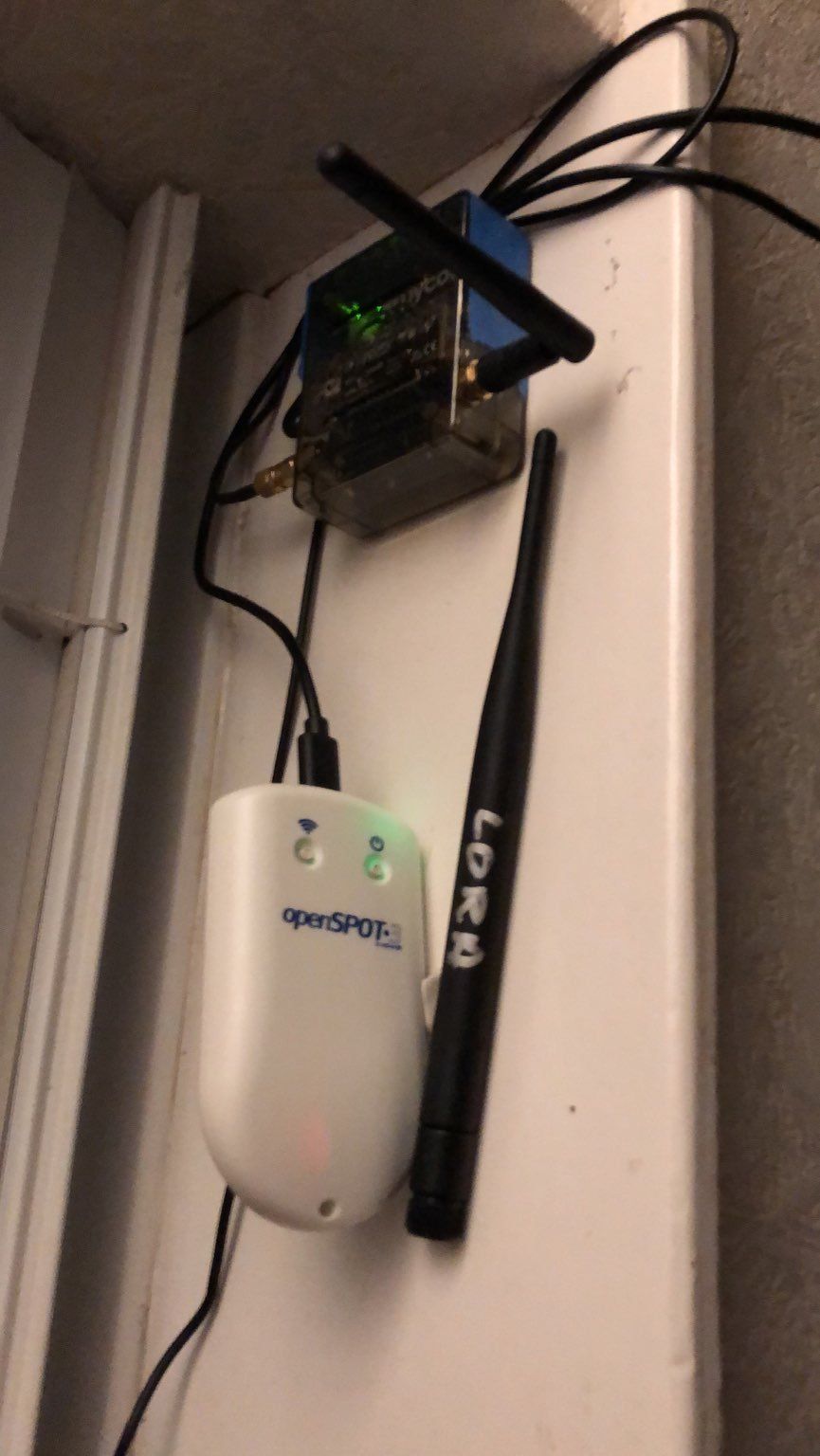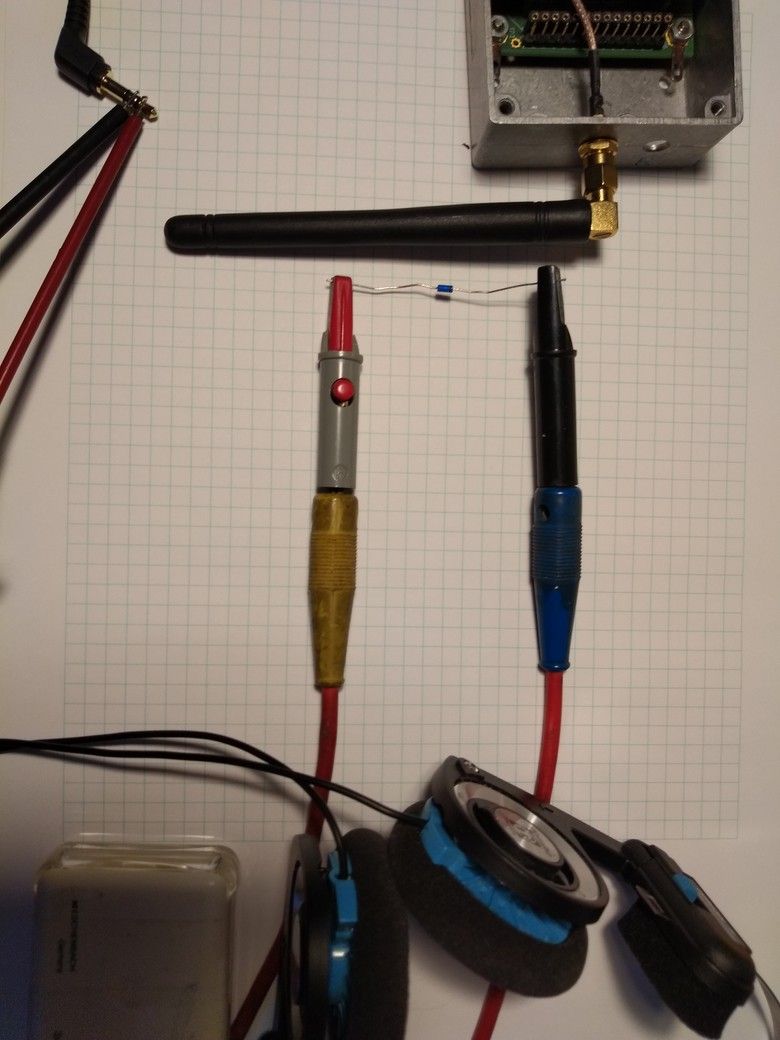Is my Lopy 4 LoRa radio working fine?
-
Hello all,
Please can you tell me if there is a way to check if the LoRa radio is transmitting without a spectrum analyzer?
My Lopy was working fine, now can't join TTN. I've re-flashed, use the sample code for TTN, but "not joined yet" is the only phrase I can read. A dragino node is working fine, transmitting to my upstairs gateway.
Thank you,
Ricardo.
-
@g0hww See this thread about the Pycom antenna.
https://forum.pycom.io/topic/3275/doubt-about-the-lora-antenna-kit/6?_=1618328593273
I had also made a reflection test once of the Pycom antennas I had, and they had their optimum beyond about 1000 MHz.
-
@robert-hh
Understood. My user name is my ham radio callsign, so I do understand this stuff. I also know that without the right test equipment, it is quite difficult to ascertain what frequencies specific antennas are resonant at, which is why I marked my Pycom LoRa antennas. You would not believe how many antennas I have. I hadn't actually spotted that the antenna in the OP's picture was not in fact the same Wifi antenna in my picture above, so I now guess that it was not sourced from Pycom.The reason for my above post is principally that I recently spotted, in a blog post by one of my friends, that he had been using a Pycom LoRa antenna for Wifi on his LoPy4 and thought that I might be on a roll. Perhaps not though.
-
@g0hww The wavelength (WL) of LoRa at ~900MHz is 33cm. Hence, WL/2 is ~16.5cm, WL/4 is ~8 cm. For WiFi an 2.4GHz WL=12.5cm, WL/2 ~ 6 cm and WL/4 ~ 3cm.
Simple antennas are either of type WL/2 or WL/4, where WL/2 is more forgiving in use. Depending on the internal structure of the antenna, a WL/2 or WL/4 antenna can be shorter than the free air wave length.
The Pycom Antenna is a somewhat shortened WL/2 antenna with an active length of ~15cm. The short antenna could be a WL/4 Lora antenna or a WL/2 WiFi model. Hard to say without opening it.
-
Is that antenna a LoRa antenna or a Wifi antenna? I ask, as I have 3 antennas sitting around that I have marked as LoRa with a silver sharpie, and they don't look like that.

The unconnected antenna in this picture is what I believe to be a Pycom LoRa antenna (hence the markings.) The short antenna connected to that LoPy4 unit is what I believe to be a 2.4GHz Wifi antenna.
I am using bigger magmount antennas for LoRa, hence why I have 3 of those marked antennas sitting around here.
-
@rpalma Just to be sure, you connected your antenna to the correct connector? It's easy to mix up the 3 antenna connectors...
-
@rpalma DId you properly reset the LoPy4 before using. Just powering might not be sufficient. And did you disable PyBytes?
-
@robert-hh hello, thank you for your setup, you gave me a great help. I used a signal diode 1n4148 and it worked, so in another node I can listen a clear electric noise and that doesn't happen on Lopy4. So I guess I'll have to find an LoRa node alternative and use this 3 years old Lopy as an expensive MQTT node via WiFi/BLE.
Thank you.
-
@rpalma I found an easy way with simple stuff to test, whether RF is coming from the antenna. based on good-ol detector radio, it only requires a small signal diode and a headset. Plase the diode (e.g. 1n4148 (si) or better 1N5711, BAT41 (schottky) or the like next to the antenna and connect the headset to the leads of the diode. Then you will hear a click every time the RF is switched on and off. If you connect an oscilloscope, you'll see a pulse.
P.S.: In my tests, the LoPy4's do not send any more after soft reset. They always need a physical reset to start. Even power cycles are not always sufficient to reset the LoRa radio. The lora.reset() method is empty at best, since the reset line of the SX1276 is not connected to a GPIO pin. In the standard build it causes a crash, since it executes a call to address 0. And there is no way to reset the radio by writing to a register.
-
@robert-hh Thank you for your advice. Fortunately I have easy access (when I'm not WFH) to a R&S FSH3 and next time I have to go to office, I will bring it.
-
@rpalma The signal is too weak to be picked up by simple tools. You need something like a SDR or oscilloscope. Suitable USB SDR receiver are available for 20-30 €. So it's worth a purchase, as well as a simple saleae logic analyzer clone for about 10 €.